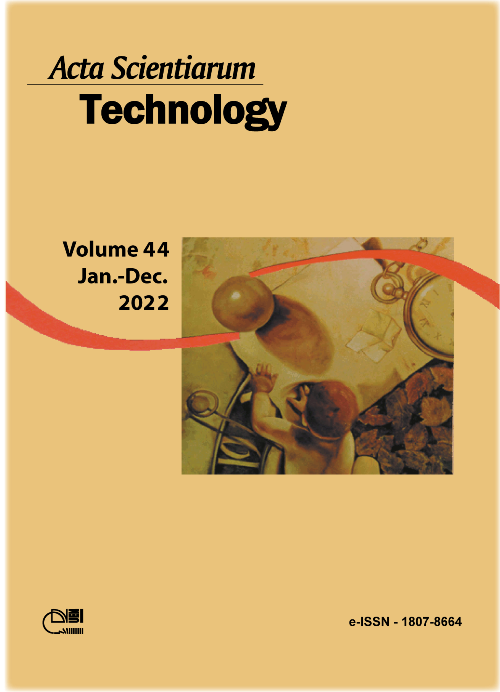Antimicrobial activity and time kill curve study of newly synthesized dialkyl carboxylate cyclohexane derivative; A novel anti-Pseudomonas aeruginosa compound
DOI:
https://doi.org/10.4025/actascitechnol.v44i1.58868Palavras-chave:
Pseudomonas aeruginosa; antimicrobial activity; microdilution method; time kill curve; minimum inhibitory concentration; drug resistanc.Resumo
Pseudomonas aeruginosa causes nosocomial infections, ventilator-associated pneumonia and high morbidity and mortality in immunocompromised and cystic ï¬brosis patients. Development of the high level of resistance to multiple antibiotics and lack of new drugs accentuate the need of new antimicrobial substances against this opportunistic pathogen. A novel dimethyl carboxylate cyclohexane derivative was synthesized and initially screened against four Gram-positive bacteria and four Gram-negative bacteria by agar well diffusion method. Minimum inhibitory concentration (MIC) was determined against all test pathogens using resazurin dye by broth microdilution method. Effect of test compound on growth curve of Pseudomonas aeruginosa BDU-49 was evaluated by turbidimetric method. Time kill assay was performed to assess bacteriostatic or bactericidal nature and relationship between the concentration of the test compound and the net growth rate of Pseudomonas aeruginosa BDU-49. Test compound exhibited better antimicrobial activity against Gram-negative bacteria. Pseudomonas aeruginosa BDU-49 was the most susceptible test culture with MIC 62.5 μg mL-1. The growth curves of Pseudomonas aeruginosa BDU-49 demonstrated that test compound could inhibit the growth and reproduction of bacteria. Time kill assay showed that test compound is bactericidal at 2í— MIC and bacteriostatic at MIC. Overall, these data indicate that test substance could act as probable novel anti-Pseudomonas aeruginosa compound in future.
Downloads
Referências
Downloads
Publicado
Como Citar
Edição
Seção
Licença
DECLARAÇíO DE ORIGINALIDADE E DIREITOS AUTORAIS
Declaro que o presente artigo é original, não tendo sido submetido í publicação em qualquer outro periódico nacional ou internacional, quer seja em parte ou em sua totalidade.
Os direitos autorais pertencem exclusivamente aos autores. Os direitos de licenciamento utilizados pelo periódico é a licença Creative Commons Attribution 4.0 (CC BY 4.0): são permitidos o compartilhamento (cópia e distribuição do material em qualqer meio ou formato) e adaptação (remix, transformação e criação de material a partir do conteúdo assim licenciado para quaisquer fins, inclusive comerciais.
Recomenda-se a leitura desse link para maiores informações sobre o tema: fornecimento de créditos e referências de forma correta, entre outros detalhes cruciais para uso adequado do material licenciado.















